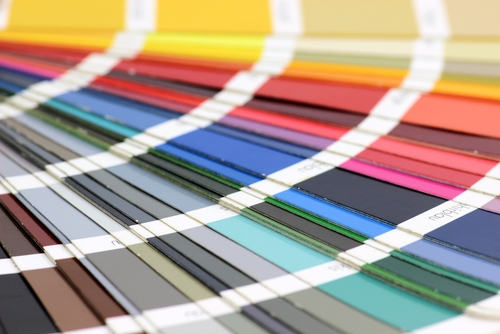In the age of technology, finding the information that you seek has never been easier. From finding retailers that sell the products and services, you’re looking for to researching remedies to cure what ails you and everything in between, just head to your computer or pull out your smartphone, open up a web browser, enter whatever it is that you’re looking for, and voila! – With the push of a few buttons or taps on a screen, you’ll have a wealth of information at your fingertips.
Not only has the technology that we use to acquire the information that we seek advanced but so has our experience with these devices. Today, website developers are focusing more and more on user experience, not only their ease of use but their visual appeal. That totally makes sense, as the way in which individuals view and interact with anything in their world – including websites – significantly impacts their level of trust. In website design, colour theory has a marked impact on user experience.
What is colour theory? Why is it important for web design? How should it be implemented in web design? Our web design London company have put together this insightful blog to answer those exact questions!
An Overview of Colour Theory
Colour theory incorporates many elements; however, in a nutshell, and at its most basic level, it refers to the way in which we interact with colours in design via three essential components:
Complement.
Complementing colours is the way in which individuals view colours in terms of their connections or relationships with other colours. Colours that are positioned on opposite ends of the colour spectrum are more visually appealing, as they create a happy medium for the eye; that is, there’s a natural balance for the eye between complimentary colours and doesn’t have to strain in order to accommodate a specific part of the colour spectrum.
Contrast.
Contrast is important in colour therapy, as it minimises eye strain and allows individuals to concentrate their attention by creating a clear division between elements. An obvious example that illustrates contrast is the proper selection of background colour and text colour. The contrast of stark colours that complement one another; black text on a white background, for example, is easier to read than purple text on a blue background or two different shades of the same colour, such as a dark yellow text on a light yellow background. When selecting background and text colours, to effectively establish contrast, the rule of thumb is to use a very light background and a very dark text.
Vibrancy.
Vibrancy has a direct impact on the emotion that web design conveys. Bright hues make individuals feel energised, making brighter colours an ideal choice in web design if you’re advertising a product or invoking a particular emotional response is your goal. Darker colours illicit a sense of relaxation and allow the mind to concentrate on other topics, ideas, etc. To illustrate, if you want visitors to concentrate on the content on your website, a background that features a dark colour scheme would be ideal.
For a more in-depth look at colour theory, you can read 99designs article here.
Why Colour Theory is Important in Web Design
So, why is colour theory important in web design? Put simply, it’s because colour has a significant impact on user experience, and users want to have a good experience with the websites they use. In other words, a website that doesn’t adhere to the three components of colour theory as outlined above – complementation, contrast, and vibrancy – are less likely to establish a positive and engaging user experience; for example, users will likely click off a website that features bland colours, clashing, and/or listless, as it won’t be visually appealing, and if it isn’t visually appealing, it won’t be engaging or create a positive experience.
Colour is the first thing that people see when they view anything in the world, including websites. By selecting and incorporating ideal combinations of colours in the design of a website, you can ensure that your website will appeal to visitors.
Colour influences people in a variety of ways. As an example, lighter colours are typically associated with optimism, whereas darker colours illicit feelings of pessimism. Another example: red is viewed as a warning, while green is viewed as safety or acceptance (think about a stop light: red means stop and green means go). To further clarify, colour establishes a visitor’s first impression until they view the content.
How to Effectively Apply Colour Theory in Web Design
Colour schemes are the foundation of colour therapy. As such, when applying colour theory to web design, selecting the right colour scheme is important. There are three main configurations of an effective colour scheme, which include the following:
Triadic.
A triadic colour scheme is comprised of three colours that lie on opposite ends of the colour spectrum. Use the following tips to create a triadic colour scheme:
- Look at a colour when and select the base colour you would like to use; blue, for example
- Draw an equilateral triangle, with the base colour being the foundational point; if you’re using blue, as your base colour, blue would be the foundational point
- The three points of the equilateral triangle will create your tri-colour scheme, for instance, blue, yellow, and red.
In a triadic colour scheme, the colours used are equally vibrant and properly complement one another.
Compound.
A compound colour scheme, also known as a split complementary colour scheme, features a range of complementary colours. While looking at a colour wheel, two colours are selected from opposite ends of the colour spectrum. By choosing colours that sit on opposite ends of the colour spectrum, you’ll have more freedom in your design; plus, you will benefit from the visual appeal that’s associated with complementary colours.
Analogous.
The third type of colour scheme – the analogous colour scheme – is based on a thoughtful selection of colours that reside within the same region of the colour spectrum. Typically, the colours in this colour scheme are differentiated by their vibrancy, as well as their contrast, when they are compared to one another. Examples of an analogous colour scheme include:
- Monochromatic, or different shades of a base colour; purple is the base colour, and different shades of purple are used in the design
- Different shades of yellow and green
Understanding the Psychology of Colour
In addition to being aware of the three primary colour schemes that were outlined above, when incorporating colour theory into website design, it’s also extremely important to have an understanding of the psychology of colour; in other words, the way in which people view and interact with colour, or the impact that colour has on people.
It’s long been established that colour has a powerful psychological influence on the human brain. Each colour represents different emotions and meanings for individuals. Though there isn’t a set definition of the meanings of colours, the following are some of the feelings that colours often evoke in individuals.
Red = danger, importance, and love.
Red is an energetic colour; just looking at it can increase your pulse and heart rate, as well as your metabolism. As such, if you want to grab a visitor’s attention, use red in your website design (that’s exactly why McDonald’s and other mega-corporations use red in their logos and marketing).
Yellow = happiness, warmth, and attention.
When you think of the colour yellow, you likely envision a sunny disposition. That’s because this colour invokes feelings of happiness and warmth. It’s also attention-grabbing and quickly commands the attention of the viewer (probably why yellow is the other colour McDonald’s uses in their logo and marketing).
Orange = optimism, energy, fun.
Orange has a positive vibe. In commerce, it’s been found that people associate orange with inexpensive products. If you are designing an eCommerce website, the colour orange would be a great choice to convey low prices.
Green = nature, growth, success.
It isn’t surprising that the colour green is associated with nature, so it’s a great colour to use in the designs of websites that are linked to nature; homoeopathic health and wellness products, for example.
Blue = calmness, trust, and comfort.
Blue elicits feelings of relaxation, comfort, and trust. Therefore, in website design, it can help to build trust in a company and make users feel more secure about working with that company.
Purple = creativity, luxury, wisdom.
Purple is typically associated with royalty and luxury, so if you’re marketing products or services that are luxurious in nature, using the colour purple in the design of your website would be an excellent choice.
White = innocence, health, cleanliness.
Typically, people associate the colour white with cleanliness, health, and wellness, as well as innocence. This would be a great colour to use in website design to convey that a product is safe.
Black = mystery, sophistication, power.
Black is usually limited to use as an accent colour or for the text on a website. When used as a primary colour, black can convey a feeling of luxury.
Get Your Web Design Done Right
In the end, correctly applying colour theory for an effective web design is all a part of a professional website build. Here at WebDeveloperLondon.com, our team very carefully selects your website colour scheme, with deep insights and reasonings beyond “it’s your brand colour.”
If you have an idea in mind for your new web design, please speak to our team for a free consultation over the phone, on email or through a Zoom meeting!





